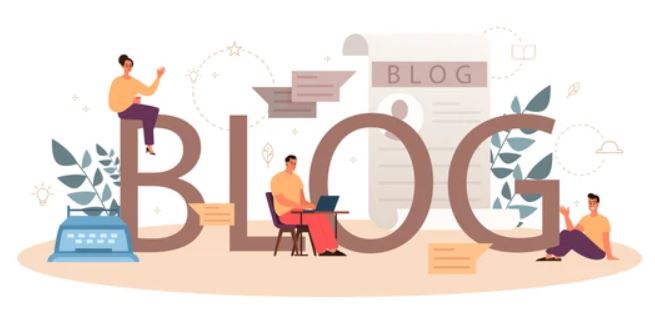Thanks to Google's Developer Previews, we already had the chance to test Android 13 extensively, but with the arrival of Android 13 Beta 2, we can now see exactly how it will look - even on non-Pixel devices. Even though it feels like Android 12 was just released, Google's development cycle calls for a new Android version every year.
To make sure it's bug-free and apps are ready for it, the company opens up its previews, and this time is no different. Since we already had the opportunity to play with some pre-release versions, we learned a lot about the new OS version.
Android 13 Features: Everything We Know so Far
Android 13 release date speculation
The release of Android 13 Developer Preview 1 brings a rough timeline to Google's schedule for updates and beta releases. If you remember the Android 12 release schedule, this will look very familiar. Even before we saw this schedule, we assumed that the final release of Android 13 would be in the fall, around the launch of the Pixel 7. But Google will likely detail the release schedule at its annual Google I/O 2022 conference, which starts today (May 11).
It's worth noting that Google's Android 13 roadmap appears to have the software's first beta scheduled for April. Google has stuck to it, releasing Android 13 Beta 1 on April 26. We still expect a big Android 13 presentation at Google I/O. Now that Android 13 Beta 3 is here, we are getting closer and closer to the final release. The third beta brings Android 13 into platform stability.
Android 13 Eligible Devices
The release of Android 13 Developer Preview 1 brings a rough timeline to Google's schedule for updates and beta releases. If you remember the Android 12 release schedule, it will look very familiar. Even before we saw this schedule, we assumed that the final release of Android 13 would be in the fall, around the launch of the Pixel 7.
But Google will likely detail the release schedule at its annual Google I/O 2022 conference, which starts today (May 11). It's worth noting that Google's Android 13 roadmap has the software's first beta scheduled for April.
- Google Pixel 4
- Google Pixel 4 XL
- Google Pixel 4a
- Google Pixel 4a (5G)
- Google Pixel 5
- Google Pixel 5a (5G)
- Google Pixel 6
- Google Pixel 6 Pro
- Google Pixel 6a
Android 13 features
We don't know too much yet about the full feature set of Android 13 - what's included in Android 13 Developer Preview 1, Developer Preview 2 and Beta 1. But some rumors from Android Police give us a good taste of what we can expect this year.
Spatial Audio/Virtual Surround Sound: whatever you want to call it, Google seems to be working on the ability to give your audio devices a 3D effect when paired with your Android phone.
Bluetooth LE Support: The latest Bluetooth standard consumes less power, allows for pairing of multiple devices, and reduces stuttering. Therefore, it is very pleasing that the necessary audio codec is included in Android 13.
Copied text editing: just as you can tap on the preview of a screenshot to make changes before saving, Android 13 previews copied text and allow you to edit it before it is copied to the clipboard, hopefully saving you from some mistakes. Also, when the phone detects that you've copied a hyperlink, an instant open button appears in Chrome.
Photo selection: The new photo selector added in the first developer preview for Android 13 takes over a feature already available in iOS 15. You can choose to share specific photos with an app, rather than your entire gallery. This feature adds an extra element of privacy, as apps can only see the data you want to share with them.
Nearby Wi-Fi Device Authorization: Another new feature in the Android 13 developer preview: The Device Nearby permission now includes a Wi-Fi element. The NEARBY_WIFI_DEVICES permission allows apps to access your phone's knowledge of Wi-Fi access points, potentially limiting what you share with external apps.
Third-party themed icons: As you may recall, Android 12 allowed icons to shade themselves according to the background image, although the feature was limited to Google apps. Based on the developer preview, Android 13 extends this capability to third-party apps.
Dual eSIM support: According to a report, Google may offer a way to connect multiple mobile carriers to a single eSIM in Android 13. This dual eSIM support in Android 13(opens in a new tab) would eliminate the need for a physical SIM card, although this would be left up to carriers and phone manufacturers.
New QR code scanner: screenshots obtained by Android Police(opens in new tab) show two new QR code scanner options. The first allows you to access your phone's scanner from the lock screen, which means you can scan restaurant menus without unlocking your device. This would certainly be welcome.
Media playback sharing: Android could get its own media sharing feature to compete with the iPhone and HomePods. If you don't already know, you can pass media to a HomePod mini by tapping your iPhone on it. If Android Police(opens in new tab)'s source is correct, Android 13 could see "Media TTT" or "Media Tap-to-Transfer." This would allow you to tap your phone to a device like a Nest speaker to transfer media playback to it. How this would work is unclear at this time.
Granular media access permissions: Android 13 Beta 1 introduced new granular media access permissions. Apps must now request access to your pictures, videos, and audio files separately. Previously, apps had access to all your media with a single permission.
The media output selection has been redesigned: Android Police assumes that Google will not leave it at the photo selection, but will also make changes to the media output selection. Here you can select which speaker your media will be played on, whether it's your phone's speakers, your Bluetooth headphones, etc. The screenshots we've obtained show that the volume bar appears to be getting a rounded, full-size option that matches the new main volume bar in Android 12.
Adjustable flashlight light: A new report from Esper has found commands in the developer beta that suggest Google will adjust the brightness of the flashlight instead of simply turning it on or off. This feature has been around for a while on iOS and some Android brands. So it would be useful to have this feature integrated by default.
App Archiving: While this isn't specific to Android 13, Google has officially announced a new feature that will allow apps to be stored in a smaller, archived format on users' phones to reduce their storage footprint until needed. This sounds especially useful for users with limited storage space on their devices.
Notification Permissions: Android 13 Developer Preview 2 introduces notification permissions, basically copying iOS exactly. This means that you can deny apps from sending notifications when they are first launched, provided that the developers include this feature.
Bluetooth LE audio: Android 13 will add support for Bluetooth LE audio, which means you can get higher quality audio with less power consumption.
MIDI 2.0 support: Android 13 will also add support for MIDI 2.0 devices.
Predictive audio routing: Android 13 offers new audio device and audio profile APIs to better handle audio production and device selection. This will help users select the best audio format for their track, which will be of great benefit to musicians.
Better error reporting in KeyMint and Keystore: Android 13 features new error reporting in the KeyMint and Keystore cryptographic key systems. Developers who rely on these systems will be able to detect errors when their applications are unable to generate keys correctly. More importantly, developers will be able to use the errors to pinpoint the problem and repeat the key generation process.
Android 13: What we want to see
Google employs hundreds of people who work on this stuff, but they're all ultimately human. Mistakes and errors are bound to happen. For Android 13, I'd like to see the following things, and I'm sure I'll think of more.
Fewer bugs: It's no secret that Android 12 had a bumpy start with many bugs. While I personally didn't have too many issues, I know many others had the opposite experience. The switch to Material You brought some issues, much like when Lollipop came out in 2014. Problems were bound to happen, but I'd like to see Android 13 stabilize things.
Bring back the Wi-Fi quick settings tile: In Android 12, Google combined the quick settings for mobile data and Wi-Fi control into one tile called "Internet." This makes switching Wi-Fi or switching networks a hassle. I would like to see this change reversed in Android 11.
Universal scrolling screenshots: Android 12 introduced scrolling screenshots, but only for some apps. Developers had to implement a "view-based UI" element in their apps, which meant there were no scrolling screenshots. I would like to see Android 13 introduce screenshots for all apps and situations, as has been the case on some other Android phones for years.
Smart home controls in the power menu: In Android 11, smart home controls could be accessed from the main menu. In Android 12, they are hidden behind a quick settings tile. It's just another step to do something basic like turn off the lights. I would like to see Google bring the controls back to the power menu.



















0 Comments